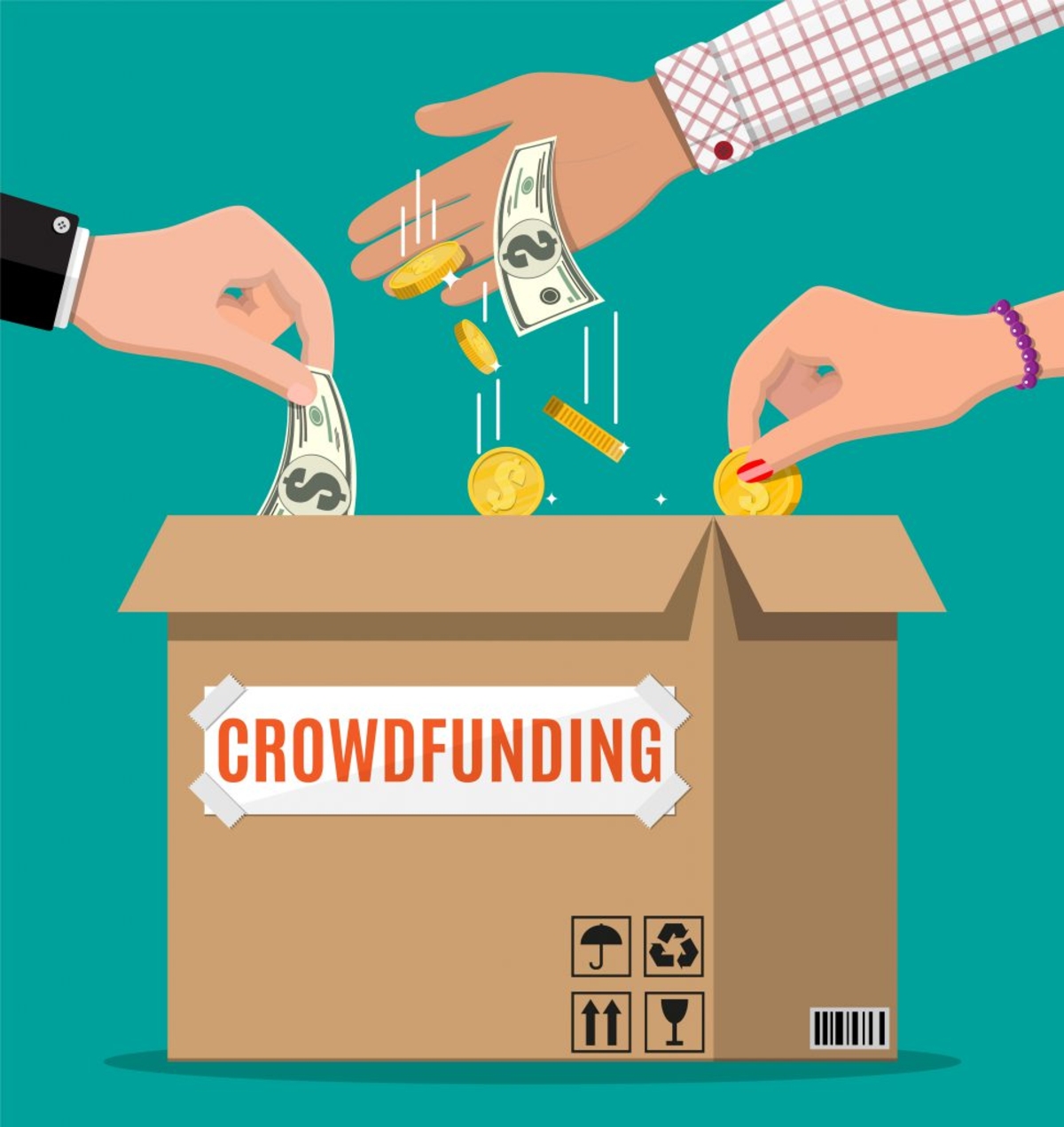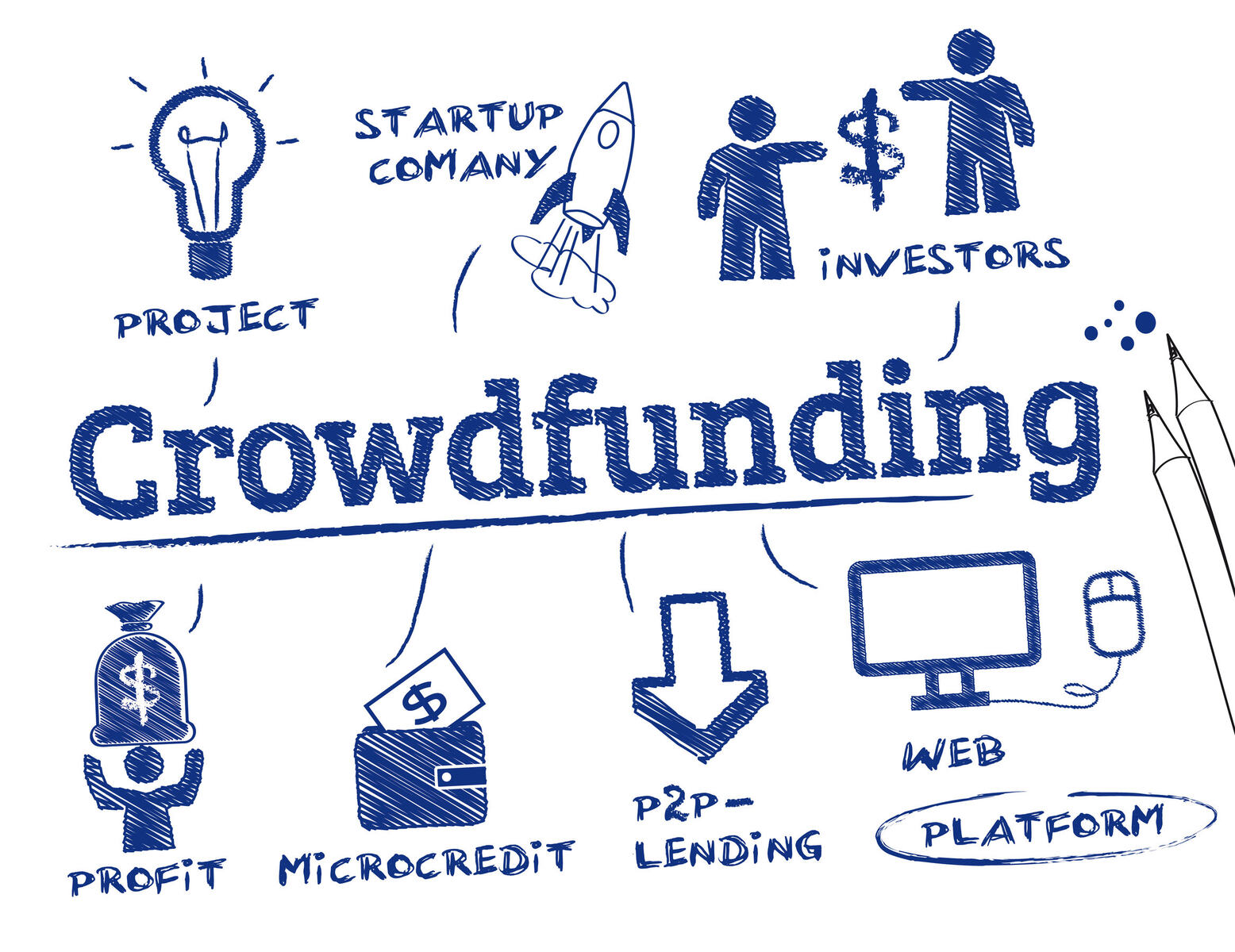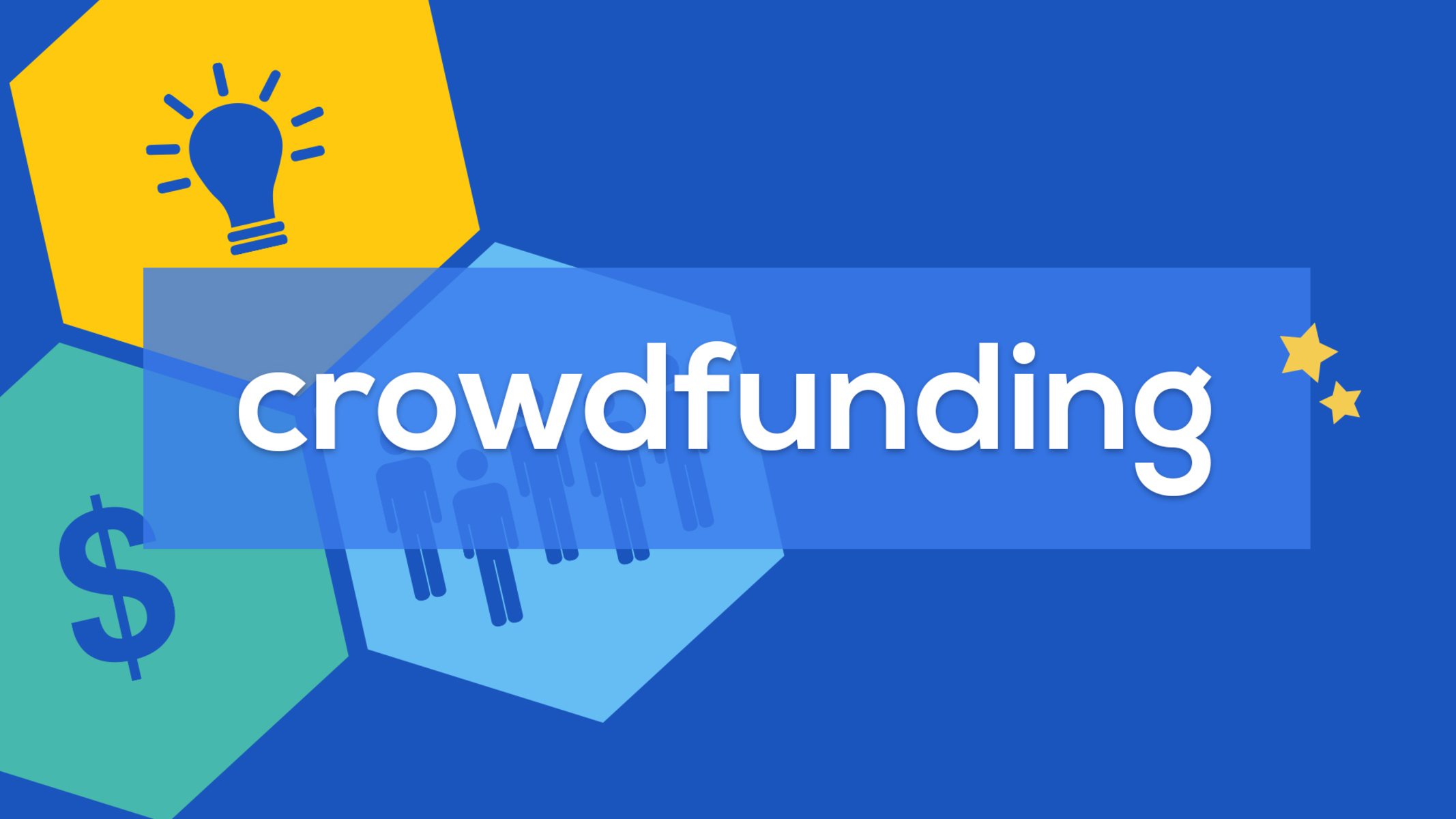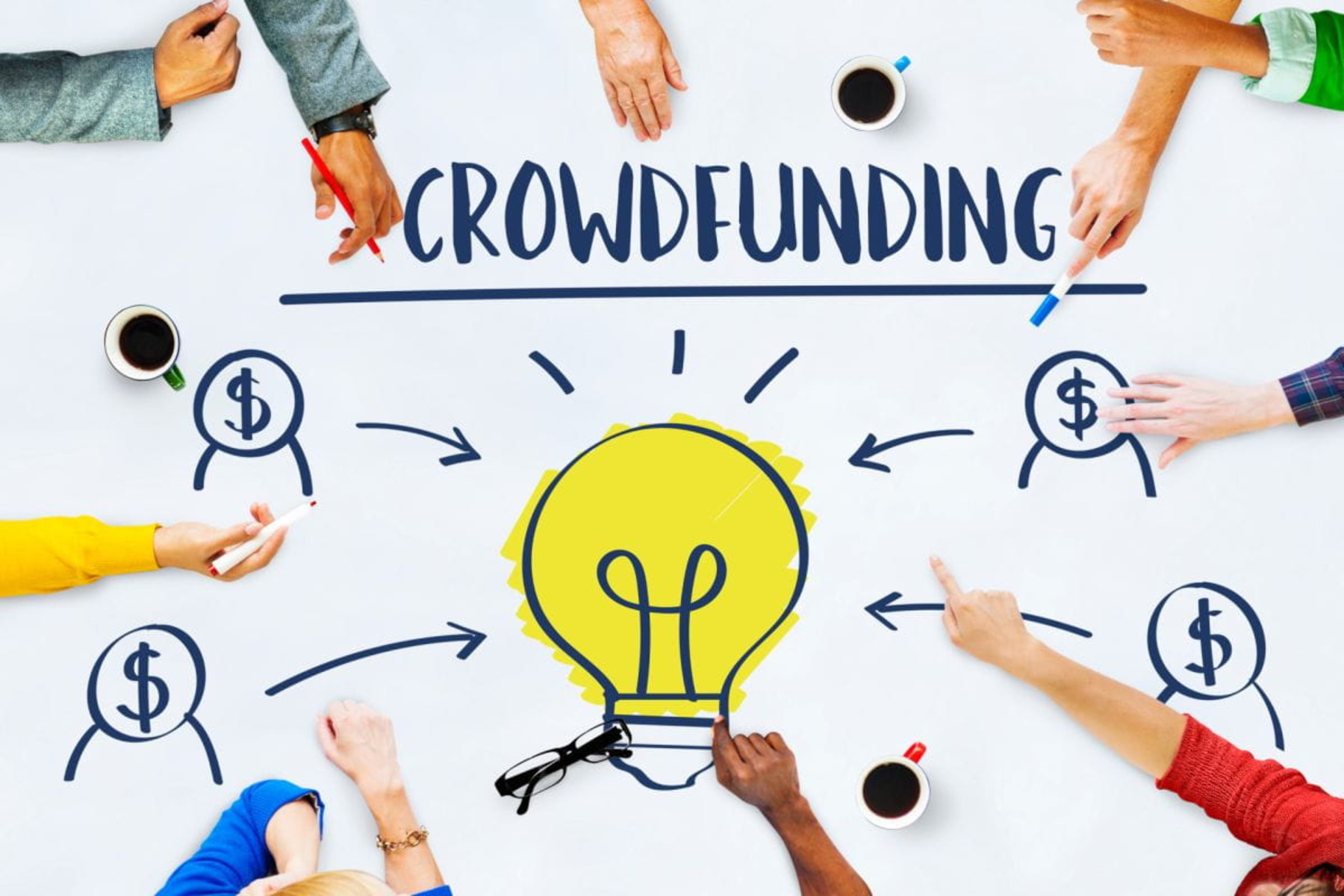Introduction:
Welcome to the world of crowdfunding, where individuals and businesses have the opportunity to raise funds for their projects and ideas through online platforms. Crowdfunding has emerged as a popular alternative to traditional funding sources, allowing creators to connect directly with a global audience and receive financial support for their ventures. Whether you’re an entrepreneur, artist, inventor, or someone with a compelling story to share, crowdfunding can be a game-changer in bringing your dreams to life.
With the rise of crowdfunding comes the question: what is the maximum amount you can raise from a crowdfunding campaign? The answer to this question depends on several factors, including the chosen platform, the goals set for the campaign, and the marketing strategies employed.
In this article, we’ll dive into the world of crowdfunding and explore the various aspects that can influence the maximum amount you can raise. We’ll also take a look at some successful crowdfunding campaigns to provide inspiration and insights on what works.
Before delving into the details, it’s essential to understand that crowdfunding is not a guaranteed source of unlimited funding. While some campaigns have achieved staggering amounts, success is not solely determined by the amount raised, but also by the impact and engagement generated by the campaign.
In the following sections, we’ll explore the factors that can influence fundraising goals, the limitations imposed by popular crowdfunding platforms, and the strategies and tactics that can maximize the amount raised from a campaign. So, if you’re ready to embark on a crowdfunding journey and unlock the potential to turn your ideas into reality, let’s dive in!
Setting goals for a crowdfunding campaign:
One of the key steps in launching a successful crowdfunding campaign is setting clear and achievable goals. These goals serve as a roadmap for the campaign and provide a benchmark for measuring its success. When it comes to determining the maximum amount you can raise, your goals play a vital role in shaping your fundraising strategy.
Firstly, it’s important to define the financial target of your campaign. Consider the costs and expenses involved in bringing your project to life, such as manufacturing, production, marketing, and distribution. Be realistic and ensure that your funding goal covers these expenses adequately.
However, setting a high financial goal does not guarantee success. Crowdfunding platforms often emphasize the importance of reaching and exceeding your initial funding target. This is because surpassing your goal not only provides you with additional funds but also demonstrates the demand and interest in your project, attracting more backers.
Additionally, it’s crucial to set non-monetary goals as well. These can include raising awareness about a social cause, building a community around your brand, or attracting industry partnerships. Your crowdfunding campaign should align with these objectives, allowing you to measure success beyond just the funds raised.
When setting your goals, consider the timeline of your campaign. Crowdfunding campaigns typically run for a set period, ranging from a few weeks to a couple of months. Set achievable milestones throughout the campaign, such as reaching a certain percentage of your funding goal within the first week or securing a specific number of backers by a particular date.
By breaking your campaign goals into smaller, manageable targets, you can maintain momentum and encourage continuous support throughout the duration of the campaign. This also allows you to track your progress and make adjustments to your strategies if needed.
Remember, the maximum amount you can raise is not solely determined by your goals, but they provide a foundation for your campaign strategy. Putting careful thought into your financial targets, non-monetary objectives, and timeline can help you set realistic goals and pave the way for a successful crowdfunding campaign.
The influence of the chosen platform:
Choosing the right crowdfunding platform can significantly impact the success of your campaign and ultimately determine the maximum amount you can raise. Each platform has its own unique features, audience reach, and fee structures that can affect your fundraising efforts.
One of the primary considerations when selecting a platform is the type of crowdfunding model it offers. There are several models to choose from, including donation-based, reward-based, equity-based, and debt-based crowdfunding. Each model caters to different types of projects and attracts distinct types of backers. Understanding the strengths and limitations of each model will help you align your project with the most suitable platform.
Another crucial factor to consider is the audience and user base of the platform. Some platforms have a larger and more diverse community of backers, increasing your chances of reaching a substantial number of potential supporters. Research the demographics and preferences of the platform’s users to ensure that your project aligns with their interests.
The visibility and reach provided by the platform also play a significant role in determining the maximum amount you can raise. Platforms with a robust marketing and promotion strategy can expose your campaign to a wider audience, increasing the chances of attracting more backers and funding. Look for platforms that have a strong presence on social media, online communities, and traditional media outlets to enhance the visibility of your campaign.
The fee structure of the platform is another important consideration. Most crowdfunding platforms charge a percentage of the funds raised as a fee. Understanding these fees upfront is essential to ensure that they align with your budget and fundraising goals. Keep in mind that platforms with higher fees may offer additional features and support that can enhance the success of your campaign.
Lastly, consider the user experience and functionality offered by the platform. A user-friendly interface, intuitive campaign creation tools, and robust analytics can help you optimize your campaign and make data-driven decisions. Look for platforms that provide comprehensive resources, tutorials, and customer support to assist you throughout the campaign.
Ultimately, the platform you choose can make a significant difference in the success of your crowdfunding campaign. Take the time to research and compare different platforms, considering factors such as the crowdfunding model, audience reach, visibility, fee structure, and user experience. By selecting the right platform, you can maximize your chances of reaching the maximum amount you can raise and achieving your crowdfunding goals.
Maximum amount allowed by popular crowdfunding platforms:
While crowdfunding platforms provide creators with a global reach and access to a large pool of potential backers, it is important to understand that each platform may impose limitations on the maximum amount that can be raised. These limitations can vary depending on the platform’s policies and guidelines.
Let’s take a look at some popular crowdfunding platforms and their maximum funding limits:
- Kickstarter: Kickstarter is a renowned reward-based crowdfunding platform known for its diverse range of creative projects. Currently, Kickstarter does not impose a specific maximum funding limit for projects. However, the platform recommends that creators set realistic and well-defined funding goals to increase their chances of success.
- Indiegogo: Indiegogo is another popular crowdfunding platform that offers both reward-based and equity-based models. The platform does not have a maximum funding limit for most projects. However, they do have a cap on how much a project can raise through their InDemand feature, which allows campaigns to continue receiving contributions even after the initial deadline.
- GoFundMe: GoFundMe is primarily a donation-based crowdfunding platform that focuses on personal causes, charitable initiatives, and emergencies. There is no maximum funding limit set by GoFundMe, allowing campaigns to raise substantial amounts of money.
- SeedInvest: SeedInvest is an equity-based crowdfunding platform that focuses on connecting startups with accredited investors. While there is no specific maximum funding limit, each offering on SeedInvest has a target funding goal that the campaign aims to achieve. Investors can contribute until the offering reaches its goal or the campaign closes.
It is important to note that these platforms may have specific guidelines and criteria for projects in certain categories such as technology, healthcare, or real estate. Understanding and adhering to these guidelines is crucial in maximizing your fundraising potential.
While the crowdfunding platforms mentioned here do not impose direct maximum funding limits, it is worth noting that successful campaigns often have a strong marketing strategy, a compelling story, and a well-defined target audience. These factors collectively contribute to a higher probability of reaching the maximum amount of funds needed for the project.
As you embark on your crowdfunding journey, be sure to research and familiarize yourself with the specific policies and guidelines of the platform you choose. By understanding the limitations and leveraging the strengths of the platform, you can position your project for optimal success and aim to raise the maximum amount possible.
Factors that determine the success of a campaign:
When it comes to crowdfunding, success is not solely dependent on the maximum amount you can raise. Several other factors significantly influence the outcome of a campaign. Understanding and leveraging these factors can increase your chances of achieving your fundraising goals and creating a successful campaign.
1. Compelling Storytelling: A well-crafted and compelling story is essential to capture the attention and engage potential backers. Your story should resonate with the audience, evoke emotions, and clearly communicate the purpose and impact of your project. Use visual and textual elements to create an immersive experience that draws supporters in.
2. Clear and Achievable Goals: Setting clear and achievable goals helps build trust and transparency with your backers. Clearly communicate what you aim to accomplish with the funds raised and how you plan to use them. Backers are more likely to support projects that have well-defined plans and a realistic roadmap for success.
3. Engaging Rewards: Reward-based crowdfunding campaigns often provide backers with incentives based on their contribution level. Craft a range of enticing and value-driven rewards that align with your project and target audience. Consider offering exclusive experiences, early access to products, or personalized thank-you notes to incentivize higher contributions.
4. Effective Marketing and Promotion: A comprehensive marketing strategy is crucial for reaching a wide audience and generating interest in your campaign. Utilize social media platforms, email marketing, influencer collaborations, and press outreach to spread the word about your project. Engage with your backers and potential supporters regularly to maintain momentum.
5. Strong Networking and Outreach: Building a network of supporters and leveraging your existing connections can greatly boost the success of your campaign. Reach out to friends, family, and colleagues to kick-start your fundraising efforts. Engage in community forums, events, and online groups related to your project to expand your reach and attract like-minded individuals.
6. Transparency and Communication: Maintaining open and consistent communication with your backers is key to building trust and credibility. Provide timely updates on the progress of your project, acknowledge contributions, and address any questions or concerns raised by your backers. Transparency creates a sense of community and fosters ongoing support.
7. Timing and Momentum: Launching your campaign at the right time can significantly impact its success. Consider external factors, such as holidays, industry events, or trending topics, that may attract more attention to your campaign. Additionally, maintaining momentum throughout the campaign is crucial. Regular updates, engaging content, and strategic promotions can help sustain interest and continue attracting backers.
8. Positive Backer Experience: Providing a positive experience for your backers is essential for fostering long-term support and encouraging referrals. Respond promptly to inquiries, provide excellent customer service, and fulfill rewards in a timely manner. A satisfied backer is more likely to become a brand ambassador and support your future endeavors.
By taking these factors into consideration and implementing a well-rounded approach, you can maximize the success of your crowdfunding campaign. Remember, while the maximum amount you can raise is an important benchmark, the overall impact and engagement generated by your campaign should be the ultimate measure of success.
Leveraging social media and marketing strategies:
In today’s digital age, social media plays a crucial role in the success of a crowdfunding campaign. It provides a powerful platform to reach a wide audience, generate buzz, and encourage backers to contribute to your project. By leveraging social media and implementing effective marketing strategies, you can increase your campaign’s visibility and maximize the amount you raise.
1. Build a Strong Online Presence: Start by creating dedicated social media accounts and a compelling website or landing page for your campaign. Establish a consistent brand identity across your platforms, including logos, colors, and visual elements. This helps create a cohesive and professional image and allows backers to easily find and engage with your campaign.
2. Identify Your Target Audience: Understand who your ideal backers are and tailor your messaging and content to resonate with them. Conduct research to identify the platforms and online communities where your target audience is most active. This allows you to focus your marketing efforts effectively and engage with the right people.
3. Create Engaging Content: Develop a content strategy that includes a mix of visually appealing and informative content. Share behind-the-scenes glimpses of your project, personal stories, updates, and relevant industry news. Utilize videos, images, and infographics to capture attention and communicate your message effectively.
4. Utilize Influencer Marketing: Collaborate with influencers, bloggers, or industry experts who have a significant following that aligns with your target audience. Their endorsement and promotion can provide a valuable boost to your campaign’s visibility and credibility.
5. Encourage User-Generated Content: Engage your backers by encouraging them to share their experiences, reviews, and testimonials about your project. User-generated content creates social proof and can influence others to support your campaign.
6. Employ Email Marketing: Build an email list of interested individuals and regularly communicate with them throughout your campaign. Share updates, highlight rewards, and provide exclusive content or early access to keep them engaged and motivated to contribute.
7. Run Targeted Advertising Campaigns: Utilize the advertising features of social media platforms to reach a wider audience. Define your target demographics, interests, and behaviors to ensure that your ads are shown to those who are most likely to support your campaign.
8. Engage with Your Audience: Actively respond to comments, messages, and mentions across your social media platforms. Build a sense of community by engaging in conversations, answering questions, and showing appreciation for your backers’ support.
9. Collaborate with Other Projects: Form partnerships or cross-promote with complementary projects or campaigns to expand your reach and tap into each other’s audiences. This mutually beneficial collaboration can help both parties attract new backers.
Remember, consistency is key when leveraging social media and marketing strategies. Regularly post and engage with your audience, monitor the performance of your campaigns, and make adjustments based on insights and feedback. By building a strong online presence and implementing effective marketing strategies, you can increase your campaign’s visibility, attract more backers, and ultimately raise the maximum amount possible.
Examples of successful crowdfunding campaigns with high funding:
Crowdfunding has been instrumental in helping numerous projects and ideas come to life, with some campaigns achieving remarkable success in terms of funding raised. Let’s explore a few examples of successful crowdfunding campaigns that generated high levels of funding:
1. Pebble Time: Pebble Time, a smartwatch project, launched on Kickstarter in 2015 and became one of the most successful campaigns at the time. They set a modest funding goal of $500,000 but ultimately raised over $20 million. The campaign’s success was fueled by a combination of a compelling product, a strong community of early adopters, and effective pre-launch marketing.
2. Exploding Kittens: Exploding Kittens, a card game featuring charmingly illustrated cats, was launched on Kickstarter in 2015. The project aimed to raise $10,000 but exceeded all expectations by raising over $8.7 million. The campaign leveraged a humorous and eye-catching video, playful branding, and a well-executed social media strategy to capture the attention and enthusiasm of its target audience.
3. Oculus Rift: Oculus Rift, a virtual reality headset, gained significant attention and funding through its Kickstarter campaign in 2012. With an initial funding goal of $250,000, the campaign raised over $2.4 million, demonstrating the demand for immersive virtual reality experiences. This campaign played a crucial role in showcasing the potential of virtual reality technology and eventually led to Oculus Rift’s acquisition by Facebook.
4. Coolest Cooler: The Coolest Cooler, a multifunctional cooler equipped with features like a blender, Bluetooth speaker, and USB charger, raised over $13 million on Kickstarter. This campaign not only offered a unique and innovative product but also utilized effective storytelling, engaging video content, and strategic marketing partnerships to generate a massive amount of funding.
5. Reading Rainbow: Reading Rainbow, a beloved children’s educational program, launched a Kickstarter campaign to bring the show back and create a digital library accessible to children worldwide. Their campaign exceeded expectations, raising over $5.4 million. The success of this campaign can be attributed to the emotional connection people had with the program and the strong engagement from supporters and celebrities who endorsed the project.
These examples highlight the fact that successful crowdfunding campaigns go beyond just the product or idea. They tap into the aspirations, emotions, and interests of their target audience while leveraging effective marketing strategies and storytelling to generate excitement and support.
It’s important to note that the success of these campaigns is not solely defined by the amount raised but also by the impact and engagement they generated. They serve as inspiration and demonstrate the potential of crowdfunding to transform innovative concepts into reality.
When planning your own crowdfunding campaign, studying successful campaigns like these can provide valuable insights and ideas for creating a compelling and impactful campaign.
External factors that can impact the amount raised:
While the success of a crowdfunding campaign depends on various internal factors, it’s important to recognize the influence of external elements that can significantly impact the amount raised. These external factors are often beyond the control of the campaign creators but can shape the overall outcome of the fundraising efforts.
1. Economic Climate: The overall economic climate can have a significant impact on the willingness of individuals to contribute to crowdfunding campaigns. During periods of economic downturn or uncertainty, people may be more cautious with their spending and less likely to support projects through financial contributions. On the other hand, during economic upswings, individuals might feel more confident in their financial situation, leading to increased participation in crowdfunding campaigns.
2. Competing Campaigns: The presence of competing campaigns within the same niche or industry can affect the amount raised. When multiple similar projects are vying for the attention and support of the same target audience, it can lead to a dilution of funds and backers. The timing and positioning of your campaign relative to similar projects can play a crucial role in maximizing your fundraising potential.
3. Current Events and Trends: External events or trends can provide an opportunity or pose a challenge for crowdfunding campaigns. For example, if there’s a high demand for sustainability-related products or technologies due to growing environmental awareness, campaigns aligned with these trends may see increased support. However, unforeseen events, such as natural disasters or global crises, can shift people’s priorities and allocation of funds away from crowdfunding projects.
4. Media Coverage: Media exposure can significantly impact the success of a crowdfunding campaign. Positive media coverage from reputable outlets can bring in a surge of new backers and generate widespread awareness about the project. Conversely, negative or lack of media coverage might limit the campaign’s reach and ability to attract potential supporters. Building relationships with journalists, engaging in public relations efforts, and telling a compelling story can increase the chances of gaining media attention.
5. Cultural and Social Factors: Cultural and social factors can influence the amount raised in a crowdfunding campaign. Elements like geographic location, cultural attitudes towards donating or supporting entrepreneurial endeavors, and social norms regarding crowdfunding can impact the response and engagement from potential backers. Understanding the cultural context and adapting your campaign strategy accordingly can help navigate these factors.
It’s important to be mindful of the external landscape when planning and running a crowdfunding campaign. While these factors may not be directly controllable, being aware of their potential impact allows you to adapt your strategy and maximize your fundraising efforts. Stay up to date with current events, identify unique selling points for your campaign, and be flexible to adjust your messaging and approach based on the external factors that may arise.
Conclusion:
Crowdfunding offers a unique opportunity for individuals and businesses to raise funds for their projects, ideas, and causes. While the maximum amount you can raise from a crowdfunding campaign is influenced by various factors such as goals, chosen platform, marketing efforts, and external circumstances, it is important to remember that success extends beyond just the monetary amount raised.
Setting clear and achievable goals, leveraging the right crowdfunding platform, and implementing effective marketing strategies are crucial steps in maximizing the fundraising potential of your campaign. Additionally, factors such as compelling storytelling, engaging rewards, and strong community engagement play significant roles in attracting backers and driving the success of your campaign.
Examples of successful crowdfunding campaigns with high funding demonstrate the power of innovative ideas, effective marketing strategies, and aligned messaging with the target audience. Furthermore, external factors like economic climate, media coverage, and current events can impact the fundraising outcome, highlighting the importance of adaptability and awareness of the external landscape.
As you embark on your crowdfunding journey, take the time to research and plan meticulously. Understand your target audience, tell your story compellingly, and engage in strategic marketing and promotion efforts. Regularly communicate with your backers, provide updates, and offer a positive experience throughout the campaign.
Remember that crowdfunding is not just about the funding—it’s about creating a community, generating momentum, and turning your dreams into reality. While the financial benchmark is significant, the impact and engagement your campaign generates should be the ultimate measure of success.
By leveraging these strategies and considering the various factors that influence crowdfunding success, you can maximize the amount you raise, create a meaningful connection with your backers, and bring your project to life.

























